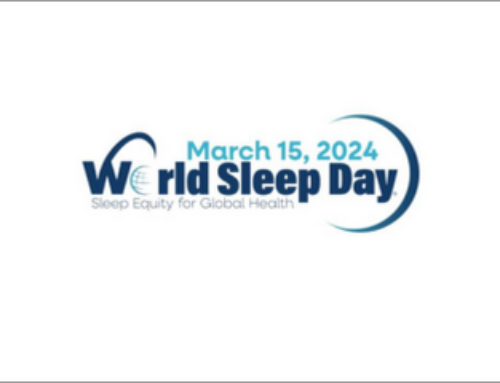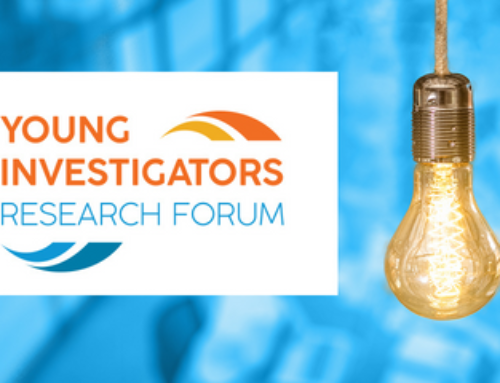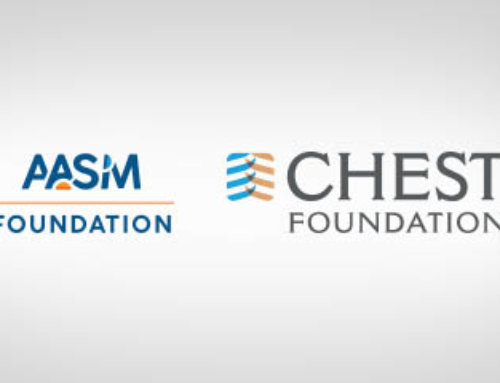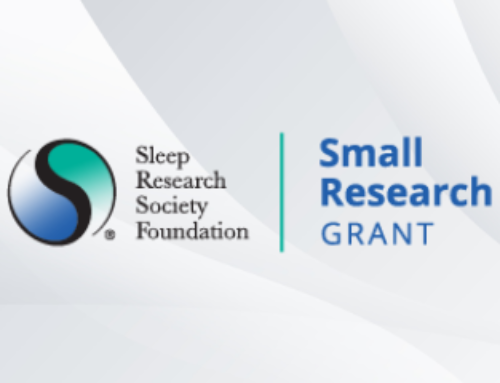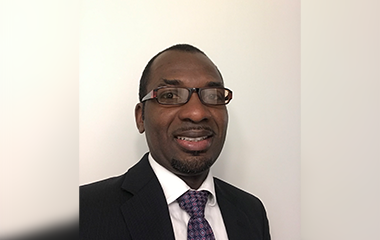
Omonigho (Michael) Bubu, MD, PhD, MPH, is a physician-scientist that is focused on Alzheimer’s Disease and sleep research among the Black community. He participated in the AASM Foundation’s Young Investigators Research Forum and Sleep Research Program for Advancing Careers. He is also the recipient of the AASM Foundation’s Bridge to Success Grant for Early Career Investigators and successfully secured a National Institutes of Health career development grant.
Learn more about Dr. Bubu and his career trajectory, interests in sleep research and the impact the AASM Foundation and his mentors had on his career.
Can you tell us how you got involved in sleep research?
I got involved in sleep research through my Master of Public Health training at the Rollins School of Public Health at Emory University. At Emory, I began to establish a line of empirical inquiry to understand health behaviors including sleep as a risk factor for cognitive decline and Alzheimer’s disease (AD). This interest was solidified during my doctoral training at the University of South Florida. As part of my dissertation, I examined how changes in rest-activity patterns, and sleep-wake cycles can be utilized as predictive tools to identify individuals at risk for AD. I did this under the tutelage of two seasoned and renowned neuro-epidemiologists, Dr. James Mortimer and Dr. Amy Borenstein, alongside mentorship from Dr. Ricardo Osorio, a sleep and AD research expert at New York University (NYU).
What made you pursue a research focus on Alzheimer’s and sleep?
The seed of my passion in AD research was conceived as a child growing up in Nigeria, where I watched helplessly as my grandmother deteriorated and passed with a disease that resulted in her outright detachment from her environment; an extremely debilitating disease I now know to be AD. As a result, my background and training reveal a long-standing commitment to an interdisciplinary, multilevel approach to understanding and maintaining cognitive health in elderly populations.
My interest was further driven by the existing data and biologic plausibility linking sleep and AD, as well as the gap that my line of research can potentially fill. Mounting evidence supports the relationship between local sleep processes and AD pathophysiology. Recent studies show that pathognomonic features of AD including Aβ, tau, and neurodegeneration, all result in specific deficits in local and global sleep expression that depend on the underlying brain regions affected. It is estimated that about 45% of AD patients have sleep disturbances. Sleep disturbances also represent an early component of AD and the severity of this sleep disruption appears to parallel the severity of dementia. Several anatomical elements of the ascending arousal system are affected in AD, including the nucleus basalis of Meynert in the basal forebrain, the thalamus, and several nuclei in the brainstem: the locus coeruleus, the upper raphe nuclei, and the tegmentopontine reticular nuclei. More importantly, substantial evidence providing support that sleep is associated with Alzheimer’s disease, cognitive decline and AD pathology exist and is mounting. However, it remains unknown whether late life AD pathological markers are associated with distinct impairments in micro and macro architectural sleep physiology or changes in sleep across the lifespan. My line of research aims to address this gap.
Additionally, my passion in reducing sleep and AD related disparities also fuels my interest. Sleep characteristics that substantially increase AD risk differ between Black people and white people. Black people are twice as likely to be sleep deprived, have the highest burden of symptomatic obstructive sleep apnea (OSA), particularly with excessive daytime sleepiness and have significantly less slow wave sleep (SWS) duration, which is associated with high CSF-Aβ levels in cognitively normal older adults. Examining whether there are racial differences in physiological sleep features that are uniquely associated with AD pathology in the human brain and the possible mediating effects of social determinants of health becomes expedient. Furthermore, especially in minoritized populations, the possibility of identifying additional physiologic risks (e.g., slow wave sleep, OSA, vascular burden), that do not require extensive invasive procedures to detect, as a complement for other imaging biomarkers in assessing risk of cognitive decline with preclinical AD is necessary. This could lead to studies ultimately designing and testing feasible, affordable, accessible, culturally-tailored interventions aimed at increasing sleep quality, reducing OSA, and controlling hypertension as therapeutic targets for AD prevention in minority populations.
What is the best research career advice you have gotten so far?
I have a couple pieces of advice that I would like to share:
- Have mentors who are experts in the field with resources, peer mentors who are slightly ahead of you, and collaborate with peers who are on the same career path as you. Everyone brings varying perspectives and experiences to the table, and all are necessary ingredients for your growth.
- Spend time on developing yourself through reading, training and/or learning new skillsets that will aid your research growth. Extensive reading will enable identification of gaps in the literature that you are able to fill, while training will assist in developing the necessary skillsets needed to tackle the identified research gap.
- As much as possible, network with peers, collaborate on research endeavors, publish, and submit grants to give yourself the opportunity for funding and career growth.
What was your experience like in the Young Investigators Research Forum?
My participation in the Young Investigators Research Forum (YIRF) was the first time, beyond the setting of a large conference, that I had the opportunity to talk with leaders in the field one-on-one. The exposure to information about NIH grant types, steps of grant submission and participating in a mock grant review was invaluable. The interactions with peers who are early career researchers with some on the same career path as me fostered development of research relationships with individuals who have become collaborators. The YIRF certainly provides a unique opportunity into the field of sleep research at the early stages and fosters a rare environment of dedicated senior faculty interacting with and guiding early career investigators.
What was your experience like in the Sleep Research Program for Advancing Careers?
Participating in the Sleep Research Program for Advancing Careers helped provide access to mentors and resources and aided me in consolidating skills necessary to successfully apply for a National Institutes of Health (NIH) grant, AASM Foundation career development grant, and/or equivalent award. My understanding of what the grants process entails significantly improved. The program exposed me to experts in the field, NIH officials and opportunities for research collaboration. In sum, the experience was invaluable.
As a recipient of the Bridge to Success Grant for Early Career Investigators, how has it helped you in securing your NIH K23 grant?
This bridge funding helped generate novel formative data that directly supports parts of my K23 specific aims and, more importantly, will support my proposed larger R01 grant. The bridge funding also allowed the opportunity to engage in activities such as addressing reviewer critiques, working on manuscript publications, and training that improved the likelihood of funding a resubmitted application. The funding provided much-needed support during the period that I needed to revise and resubmit my NIH K23 grant.
What do you hope to achieve with your NIH K23 grant?
The NIH K23 proposal examines how cardiovascular risk factors act as a potential biological mechanism mediating the relationship between sleep and cognitive outcomes. More importantly, it examines the possible mediating role of slow wave sleep and vascular risk factors (VRFs) on AD-related disparity between African Americans and non-Hispanic Whites. I hope to identify clinical sleep and vascular measures as complements to established AD pathological markers, which involves particularly invasive procedures to detect. This would aid in identifying asymptomatic Black people at higher risk of cognitive decline from Alzheimer’s disease, a crucial step to preventing its onset among the Black community. The proposal represents new, original, and hypothesis-driven work with a strong theoretical foundation. It is expected that each aim will result in published manuscripts and data, which will directly inform and shape future R01 applications. The grant will afford me the training opportunity in health disparities research and MRI/PET data analysis. The training and research plan is expected to enable me to become an independent researcher and leader in the impact of health behaviors, specifically sleep and VRFs on late-life cognitive functioning in Black patients.
In this season of thanks, what and who are you most thankful for to getting you to where you are now?
I am thankful for life, family, health, and friendships. I am particularly thankful for my wife, Dr. Ogie Q. Umasabor-Bubu, and kids, Darah and Charis, without whose support and understanding I would not be where I am now.
I am thankful for mentors who have guided and supported me including Dr. Gbenga Ogedegbe at NYU, Dr. Girardin Jean-Louis at University of Miami, Dr. Indu Ayappa at Mount Sinai, Dr. Mony de Leon at Cornell University, Dr. Jennifer Manly at Columbia University, Dr. Jose Luchsinger at Columbia University and Dr. Brendan Lucey at Washington University, my Sleep Research Program for Advancing Careers mentor.
I am particularly thankful to Dr. Ricardo Osorio, my primary mentor, who I work directly with. His support has been invaluable. I am thankful for the AASM Foundation and its dedicated staff for the resources and funding it has provided to support of my career. I am thankful for peer mentors, many of my colleagues, our lab staff and the patients/participants that volunteer their time and self to enable us to carry out our research. Above all, I am thankful to God who has made all of this possible.


